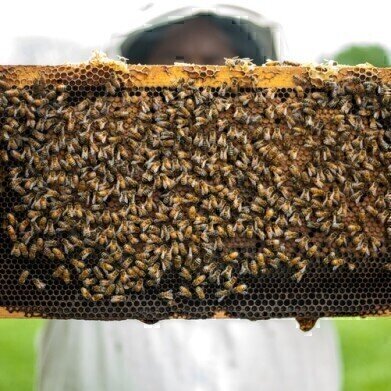Bioanalytical
Do Pesticides Affect Honey? - Chromatography Investigates
Oct 10 2020
Honey is eaten the world over. It is enjoyed as a sweet food on its own and as one of the main sweeteners used in cooking. Honey also possess’ medicinal qualities, used for thousands of years for its antibacterial and anti-inflammatory properties. But can mankind’s use of pesticides be contaminating the honey we love to eat?
A recent paper - Optimization of Method for Pesticide Detection in Honey by Using Liquid and Gas Chromatography Coupled with Mass Spectrometric Detection – published online in the journal Foods reports on work carried out by scientists in Brazil. They aimed to develop and validate a method to identify and quantify the pesticides in honey using both gas and liquid chromatography.
Pesticides in the honey
Honey is produced by honeybees from nectar they collect from flowers. But if the plants that the bees forage have been sprayed with insecticide, then the honey produced by the bees may well be contaminated with pesticides. The contamination can occur through direct contact with a bee’s body or if the bee consumes nectar or collect pollen that is contaminated.
Residual pesticides in foods have related to several toxic effects in humans. These can include carcinogenesis, immunological disorders, and neurological disturbances. To reduce the risk to humans, regulators have established maximum residue levels for pesticides in honey – and other foods – to help to protect the consumer. To measure pesticide levels in honey, precise, sensitive, and reliable analytical methods are needed. Enter chromatography.
GC and LC taste the adulterants
A good chromatographic analysis depends on many factors – starting with the sample extraction and clean-up procedures. Good sample extraction and clean-up will concentrate the matrix compounds to be detected and remove compounds that are likely to interfere with the analysis. One method that has been developed over the years to promote good extraction and clean-up of pesticide-based samples is known as QuEChERS (Quick, Easy, Cheap, Effective, Rugged and Safe).
The researchers in Brazil behind the study referenced above used a modified QuEChERS method. They analysed 33 samples of commercially produced honey from six different Brazilian states using blank samples of honey from apiaries managed under an organic system that was passed as pesticide free. The team used both liquid and gas chromatography to analyse the samples. The analysis of honey is discussed in the article, Nontargeted Omics Approach to Characterise and Profile Adulterants in Honey.
The team found that the honey analysed was safe for consumption. They concluded that the proposed method was successfully optimized and validated for multi-residue identification and quantification of pesticides in honey. It was able to detect an extensive and broad range of pesticides with remarkably high sensitivity and precision.
Events
May 11 2025 Vienna, Austria
May 18 2025 Tempe. AZ, USA
May 21 2025 Birmingham, UK
Jun 01 2025 Baltimore, MD, USA
Jun 15 2025 Bruges, Belgium














